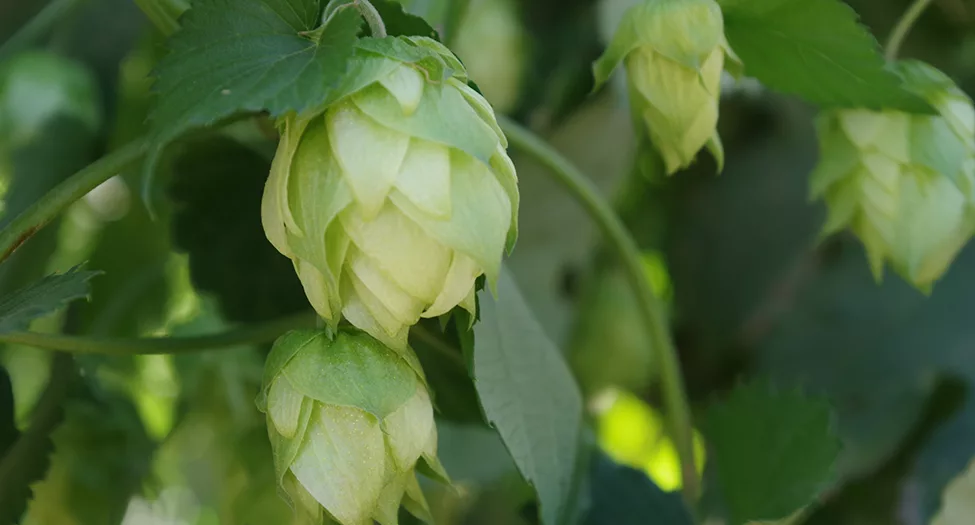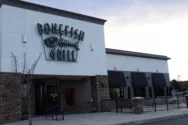
Home » Hop crops: Market slows after rapid growth
Hop crops: Market slows after rapid growth

June 12, 2019
The most recent hops data paints a picture that could be interpreted as an end to the recent boom for Washington hop farmers.
But that does not point toward a fall back to earth, said Ann George, a Moxee farmer and executive director of the Washington Hop Commission, which serves double duty as the Hop Growers of America national organization.
“Growth in the crop sector certainly has slowed,” George said. “There was a period of time from the mid-teens when we had 18 percent year-over-year growth. Now it’s 4 percent. It’s still healthy growth for the industry sector. It’s just where we are now, some varieties caught up with and exceeded demand.”
Overall, hop production was up 1 percent in 2018, according to U.S. Department of Agriculture numbers. In Washington — in particular in the Yakima Valley, where more hops are grown than in any other area in the world — harvested acreage was up to 39,170 acres, a 1.4 percent increase, compared to the 3.2 percent growth in 2017.
Of the 108.4 million pounds of hops harvested in the U.S., less than 2 million pounds came from outside the Pacific Northwest. Washington totaled nearly 78 million pounds, worth $427.5 million.
However, hop prices took a hit, on average losing 30 cents a pound down to $5.50, according to USDA numbers. That 5.2 percent price drop combined with a slight decrease in yield per acre led to a pretty big fall in the production value of the 2018 crop.
That $427.5 million in production was down $31.2 million, or 7 percent, from 2017. The previous year saw a record production of $458.7 million, a 20 percent gain from the 2016, which likewise saw double-digit growth from 2015.
A slowdown was bound to happen, coming on the heels of nearly doubling of U.S. hops since 2012, thanks in large part to the explosion of the craft beer market. Over a six-year period, hop acreage grew from less than 30,000 acres to 57,772, up 94.6 percent.
“All in all, the market is relatively in balance,” George said, adding that most of the price drop came in public varieties of hops while proprietary — or trademarked — varieties remained stable.
Indeed, among hop aficionados, 2018 may best be remembered as the year proprietary became king, as the Citra variety became the top seller in the nation, pushing the Cascade hop off the top spot it held since at least 2013.
“It’s something we’ve been moving toward for a long time,” George said.
While public hops like Cascade are free for anyone to plant — you just have to pay for the seed — proprietary hops require the farmer to pay a royalty to the patent holder, often another grower.
It can take 10 years or longer to develop a new variety of hop, and there is no guarantee it will be a hit with brewers or the beer-drinking public.

Obviously, the cost of growing public varieties is less than proprietary. However, when a hop is in demand — like Citra, which as its name suggests has a citrus profile and is popular in IPAs — it’s worth the added expense.
“Citra has been working its way up the ladder since 2013,” George said.
The Cascade hop, used in pale ales like Sierra Nevada, still is popular — it fell to No. 2. But if it follows the trend of other previous top varieties, the next few years could see it fall further as the market balances out.
“Every year now, we need to continue to fine-tune,” George said.
Hops are sold primarily two ways, with most being locked into five-year contracts. Most of the rest go to the “spot” market, where they are sold on the spot, often to smaller or newer brewers.
Farmers are hesitant to sign a contract for fewer than five years.
It costs about $10,000 an acre to put in a new hop yard. Even putting in new plants into a current field can cost up to $6,000 an acre. The first year’s harvest is considered “baby hops” — a smaller yield. It isn’t until the second year the farmer gets a full yield.
All those costs must be amortized over the lifetime of the contract. That means a farmer would have to have a big incentive — and a premium price — to replant a field for a two- or three-year contract.
“The five-year contract is the industry gold standard,” George said.
But that also means a variety of hop that is in high demand five years ago can start to fall out of favor, leaving a glut on the market. Farmers still get paid on the contract, but any overage they might sell on the spot market will be for much less, if it sells at all.
One of the strengths of the hop market also can create a potential headache for farmers. Because there are so many varieties of hops — 46 are grown in Washington — it’s a good bet there will always be great demand for some kinds, even while others flag.
However, many of those varieties have the same picking window during harvest season from late August to early October. Farmers might have as many as 14 varieties in the field, but they likely don’t have the resources to harvest all their fields at once.
That means contracts might be passed up if they require varieties that conflict with those already planted.
Still, hop farmers are buoyed by the sheer number and selection of brewers in the U.S. and around the world.
According to the Brewers Association, there were 7,450 breweries in the U.S. in 2018 — nearly all of them small craft breweries or pubs. That’s more than four times the number 20 years ago, and astronomically higher than the 150 in the U.S. in 1987.
Statewide, beer production has surged from 283,400 barrels in 2005 to 582,400 in 2017, according to the Washington Beer Commission.
In Washington alone there were 391 brewery licenses in 2018, according to the Washington Brewers Guild. Eighty percent of those were independently owned, “neighborhood” breweries producing less than 4,000 kegs a year.
All that beer contributes to the state’s economy. In 2017, beer production and related activities supported a total of 11,000 jobs and more than $1.4 billion in business revenues across the state. That includes 3,100 jobs and $477.9 million in business revenues supported through induced impacts, according to the Washington Beer Commission.
That’s a lot of money for beer featuring diverse and different hop flavors.
“A little bit they’re the victim of their own success,” George said. “There’s so much selection out there now, customers aren’t very loyal. Therefore, there will always be room for new experimentations and trying new varieties. The old standbys will always be there, but they lose ground to the new competition.
“But we’ll continue to work on five-year contract cycles.”
Agriculture + Viticulture
KEYWORDS focus agriculture viticulture 2019





